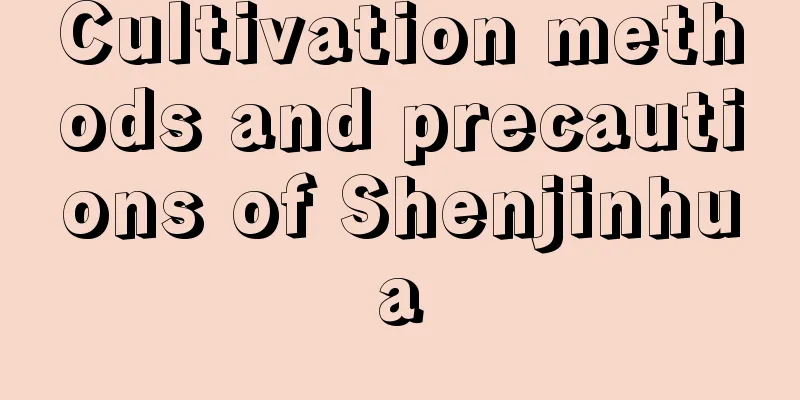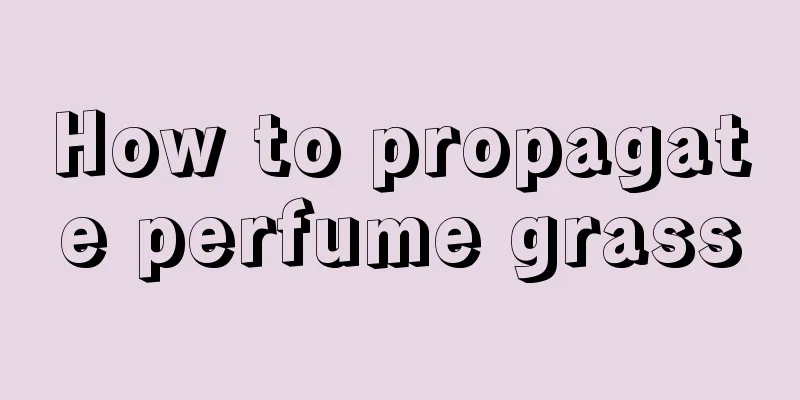How to cultivate Koelreuteria paniculata

1. Maintenance methods1. Temperature: It can withstand both low and high temperatures, and the lowest temperature it can withstand can reach minus 25 degrees Celsius. Therefore, it is often used as a greening plant in the north. 2. Watering: The water content of general plants is 60%. Plants cannot survive without water, and Koelreuteria paniculata is no exception. Under normal circumstances, it needs to be watered once or twice a week. When the temperature is relatively low, the interval between watering can be appropriately extended. 3. Fertilization: After the seedlings emerge from the soil and grow roots, you can apply nitrogen fertilizer to them, which can promote the growth of seedlings. In autumn, phosphorus and potassium fertilizers should be used to promote the lignification of the plants and help the plants increase their ability to resist cold. 4. Light: The light exposure time must be guaranteed to be more than five hours a day. Appropriate shade is needed in summer, and full-day sunshine is needed in autumn and winter to meet the light exposure time and light intensity. 2. Breeding techniques1. Reproduction: It can be propagated by autumn sowing. First, you need to choose a place with relatively high terrain, sheltered from the wind and facing the sun, and then level the land, preferably making it fine and level. Mix it with base fertilizer and sow the seeds in rows. After sowing, cover it with a layer of soil, water it thoroughly, and wait for it to germinate. 2. Pruning: In winter and spring, choose healthier branches and cut them short. In summer, trim off excess branches and remove new branches to concentrate nutrients. 3. Problem Diagnosis1. Pests: Koelreuteria paniculata is easily infected by aphids. In severe cases, the branches and leaves of the entire tree will be covered with aphids. The insects will eat the branches and leaves of the plant, causing irreversible effects on the growth of the plant. If this happens, you need to spray the plants with aphid killer. In addition to the first time, we must also protect beneficial insects such as ladybugs, which can also eliminate pests. 2. Pathology: The plant is susceptible to gummosis. Once infected, the infected area will swell and the epidermis will become moist. In the later stage, it will crack and leave gum. When symptoms appear, spray with a solution of carbendazim. IV. Other issues1. Toxicity: It is non-toxic. Generally, landscape plants are non-toxic. It is a good choice whether it is used as a greening plant or a home potted plant. 2. Is it suitable for indoor cultivation: If it is a potted Koelreuteria paniculata, it can be cultivated indoors, but it cannot be an outdoor landscape tree because its size is too large and does not meet the requirements for indoor cultivation. |
>>: How to grow dogtooth flower
Recommend
Shell flower blooming period
Flowering period of shell flower When does the sh...
What to do if the leaves of Australian cedar wither
Insufficient nutrition If the leaves are wilting ...
I used to think that “fruits” were not too expensive, but after seeing these 10 kinds, I was really slapped in the face!
10. Pineappleberry Pineapple berry is a fruit tha...
The breeding methods and precautions of red Ruyi
Red Ruyi is a foliage plant of the Araceae family...
The latest sky-high-priced succulents are out, one pot is worth a million!
Neng Hoof Jade Hottest price: 200,000 The condens...
Can Phalaenopsis be exposed to the sun? Do they need to be exposed to the sun frequently?
Can Phalaenopsis be exposed to the sun? Phalaenop...
What flowers are suitable for Baise? What are the city flowers and trees?
1. Climate characteristics of Baise Baise has a s...
What crops and vegetables can be grown in summer (what high temperature resistant vegetables are suitable for growing in summer)
Vegetables suitable for growing in hot weather Wi...
Cultivation methods and precautions of ground-planted yellow horn orchid
Yellow horn orchid , also known as white orchid ,...
Cabbage planting method steps Cabbage planting technology and management points
Cabbage cultivation is generally based on autumn ...
Can tea trees be planted in the yard?
Can tea trees be planted in the yard? Tea trees c...
Blooming hard, disease-resistant and good at surviving the summer, if you don’t plant these 10 types of roses, you’ll regret it for the rest of your life!
1Longza Gemstone advantage: When talking about ro...
How to transplant rubber trees
Situations requiring transplantation: Let's f...
How to prune oleander
When is the right time to prune oleander? General...
How to care for cactus in winter
Is the cactus afraid of freezing? The best growth...









